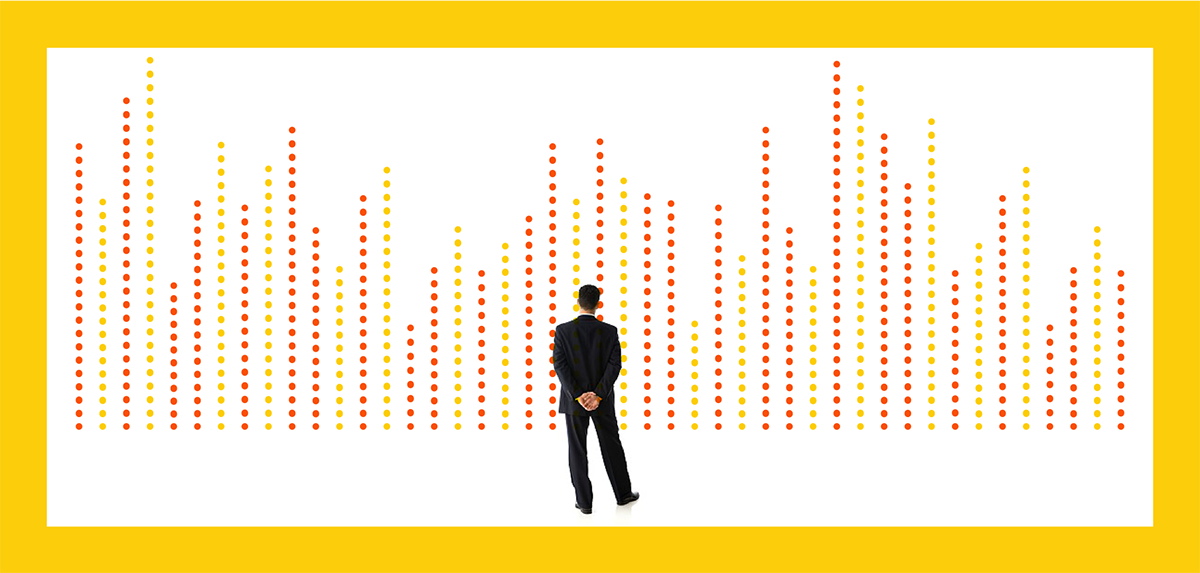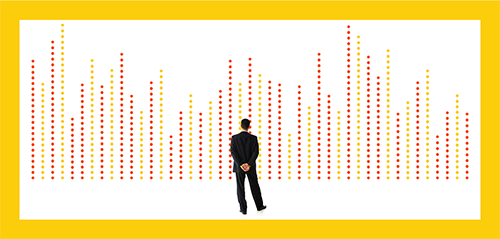
Which COVID-19 marketing shifts will outlast COVID-19?
Someday, hopefully in the not-so-distant future, 8 billion people will wake up, roll out of bed, take a deep breath, and let out a massive exhale. The era of COVID-19 as the defining focal point of our lives will be behind us.
And on that same day, 800,000 marketers around the world will ask, “Now what?”
The new normal will be the post-new normal. Marketers will be left to determine which of the many lessons they’ve learned will still be relevant in a market where consumers believe that it’s safe – or at least a lot safer – to go back in the water.
In our view, some of the more permanent impacts for marketers will include the following:
1. A re-prioritization of brand marketing
2. An overhaul in customer engagement
3. A change in the way we think about change
A re-prioritization of brand marketing
Brand marketing investments have been under pressure for a number of years. Over this time, we’ve seen companies shift budgets to marketing tactics that are easier to measure, with investment returns that happen over a period of days and weeks vs. months and years.
This has been particularly true for large organizations where there are dozens or even hundreds of marketers charged with driving revenue, but only a handful who are held accountable for driving equity in the corporate brand. In these companies, brand has too often been something to squeeze value out of, not infuse value into. And only in times of crisis or business inflection points has brand reputation risen to a boardroom priority.
Enter the mother of all crises, COVID-19. In its wake, companies quickly relearned the lesson that their reputation is not a static asset on the balance sheet, but a living, breathing organism – one that must be nurtured in times of crisis as well as times of strength.
And, somewhat paradoxically, companies with clarity around the long-term role of their brand in customer’s lives were also those most able to seize the short-term moment.
One example is Crocs, whose brand purpose is to encourage everyone to be comfortable in their own shoes. Supported by 16 commercial and nonprofit partners, Crocs has donated 860,000 pairs of clogs to healthcare workers spending long hours on their feet. This has made a strong brand stronger among both an important market segment and consumers at large.1
Another is New York Life and Cigna, brands focused on providing families with long-term financial security and healthcare. The two brands came together – ahead of their merger later this year – to create the Brave of Heart Fund. This $50 million fund is providing financial security to families of healthcare workers who lost their lives fighting the coronavirus. What could be more on-brand?
We’ve all been changed profoundly by COVID-19, the accompanying economic crisis, and more recently, our collective epiphany on systemic racism. And that extends to what we expect from brands.
We believe that more marketers will be “going long” on their brands moving forward. And using the months ahead to refine their brand narratives in the decade to come.
And apparently we’re not alone. A recent Gartner study found that among CMOs’ top strategic priorities, brand strategy has moved from near the bottom of the list in 2019 to the very top of the list in 2020.2
An overhaul in customer engagement
It’s not only what we expect from brands that is changing. But also the ways we are choosing to engage with them. And customer engagement is definitely due for an overhaul.
COVID-19 has forced digital transformation on many brands, moving the change initiative from the 5-year plan on the credenza to this week’s to-do list.
Ecommerce has been one obvious beneficiary, with the digital cash register ringing more in the first few months of the pandemic than in the entire 2019 holiday season. Beyond digital commerce, many other digital experiences are also on a rapid ascent, from remote learning to telemedicine to e-sports to online fitness.3 And 3 in 4 consumers expect many of these behaviors to continue permanently.4
In the B2B world, almost half of buyers are currently on the purchasing sidelines. Those who are buying – or getting educated to make future purchases – have a very different customer journey than they did a few months ago. Prior to the pandemic, B2B buyers were evenly split on the importance of digital vs. traditional touch points like offline marketing, sales calls and live industry events. Now, 2 out of 3 view digital as the more important channel.
Digital self-service has become the norm for many of these buyers. Prior to the pandemic, almost half of buyers purchased from a sales rep in person. Now, just over 1 in 4 do. For these buyers, marketers need to stand back and look for ways to simplify the complexity of their digital front-doors. B2B buyers are drawn to sites that offer transparency, expertise and fast decision-making.5 Marketers who can provide these experiences will be rewarded.
Buyer personas are also morphing as we speak. With 5 million new online shoppers in the 45+ age segment, some of these personas may have suddenly sprouted grey hair and donned reading glasses.
And the psyche and values of many of those buyers have changed for the long haul. Some have been forced to climb down a rung or two on Maslow’s hierarchy of needs, forgoing pursuits focused on esteem and self-actualization in favor of safety, belonging, and even survival.6 Trust, health, community and social consciousness are now at a premium.7 Marketers need to find ways to better meet both the functional and emotional needs of buyers who’ve lived through the trauma of a pandemic.
With such profound change in motion, smart marketers have already started to initiate top-to-bottom reviews of their buyer profiles and journeys, with an eye toward retooling how they will engage customers and prospects in the days ahead.
A change in the way we think about change
Perhaps the most important – and positive – impact of operating in a pandemic is a change in how organizations think about change.
Prior to COVID-19, big change was usually accompanied by even bigger timelines. The highly matrixed ways of large companies came with a significant cost: agility. Today, every marketer we speak to has a story of how his/her organization was able to create more change in the initial two weeks of the pandemic than in the previous two years. And collectively, marketers rate themselves a 5.6 out of 7 for their improvisational skills during the pandemic.8
One great example is Zappos, which extended its famous customer service beyond fashion by launching its Customer Service for Anything program. True to its name, Zappos reps answered calls about virtually anything, ranging from the best online exercise apps to where a hospital could locate pulse oximeters to monitor its COVID-19 patients.9
While creating such rapid transformation has its challenges, we haven’t encountered anyone who wants to go back to the previous pace of change.
With this in mind, many marketers are not only streamlining their own complex operations but reconsidering their agency relationships with an eye toward agility. Forrester projects that ad agencies in the U.S. will shed over 50,000 jobs, which they view as a devastating talent drain.10 No doubt much of the talent exodus will be from the big agency holding companies. We see more and more CMOs considering whether it’s time to shift some of their assignments to equally expert, but more agile agencies that can act as a catalyst rather than a barrier to rapid change.
Lessons learned from the pandemic
Living through COVID-19 has been a defining moment for all of us, as marketers and as human beings. Going through the worst of times has brought out our best, and taught us important lessons about valuing brands, engaging with customers and embracing change.
Like every aspect of life that’s been touched by the pandemic, marketing will be forever changed. But with the lasting impacts now coming into focus, we should all be able to navigate more successfully in the future.
1 AAAA, Consumer Awareness of Brands Doing Good During COVID-19, April 2020
2 Gartner 2020 CMO Spend Survey
3 McKinsey, U.S. consumer sentiment during the coronavirus crisis, August 2020
4 Accenture, COVID 19: a new era in customer engagement, May 2020
5 McKinsey, U.S. B2B decision maker response to COVID-19 crisis, May 2020
6 Accenture, A brand new purpose, May 2020
7 Deloitte, COVID-19 drives lasting changes in global consumer behavior, June 2020
8 AMA, 5 marketing strategies – and missed opportunities – during COVID-19
9 Ad Age, How marketers responded to coronavirus in the first 3 months
10 Forrester, CMOs must adjust as agencies shed 50k jobs, June 2020


 See what they have to say
See what they have to say